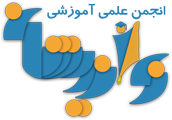جستجو در تالارهای گفتگو
در حال نمایش نتایج برای برچسب های 'text effects'.
4 نتیجه پیدا شد
-
Snow on Text در این آموزش نحوه ایجاد افکت برف بر روی نوشته ها را خواهید آموخت ... نتیجه نهایی: گام 1: یک سند جدید باز کنید و برای نمایش بهتر برف، رنگ پس زمینه رو با رنگ تیره پر کنید... البته می تونید در آخر رنگ پس زمینه رو تغییر بدید... با استفاده از ابزار type tool متنتون رو تایپ کنید... گام 2: ابزار lasso tool را انتخاب کنید... قسمتی از بالای یکی از حروف رو انتخاب کنید، که برفتون خواهد بود... طوری طراحی کنید که برف در حالت آب شدن به نظر بیاد... گام 3: از منوی تنظیمات selections بر روی Add to Selection کلیک کنید تا فعال شود بر روی حروف باقی مانده مانند مرحله قبل قسمتی را انتخاب کنید ... گام 4: به پالت Channel بروید و بر روی آیکن new channel کلیک کنید... برای تنظیم مجدد رنگها بر روی دکمه D کلیک کنید... سپس ابزار Paint bucket tool را انتخاب کنید و با رنگ سفید قسمت های انتخاب شده را پر کنید... گام 5: کلیدهای Ctrl+D را برای خارج کردن از حالت انتخاب، بزنید... سپس به مسیر زیر بروید : Filter » Blur » Guassian Blur و شعاع را برابر Radius: 3px قرار دهید... به مسیر زیر بروید: Image » Adjustments » Levels و لغزنده ها را حرکت دهید تا تصویر برف نرم و صاف شود... گام 6: به پالت Layer بازگردید و بر روی create a new layer کلیک کنید... به مسیر Select » Load Selection بروید و در فیلد channel گزینه Alpha1 را انتخاب کنید... بر روی ok کلیک کنید و سپس در لایه جدید قسمتهای انتخای شده را با رنگ سفید پر کنید... کلیدهای Ctrl+D را بفشارید تا از حالت انتخاب خارج شود... گام 7: برای اضافه کردن سایه به برف ، به مسیر زیر بروید: Layer » Layer-Style » Bevel Emboss و تنظیمات را مانند زیر انجام دهید: گام 8: در این مرحله می تونید از خلاقیت خودتون برای اضافه کردن layer styles به نوشته، استفاده کنید ... ولی اگر می خواید چیزی که من ساختم رو انجام بدید کافیه مراحل زیر رو دنبال کنید... (توجه: ممکنه نیاز باشه که شما تغییرات کمی در تنظیمات ایجاد کنید... چون بستگی به اندازه متن دارد) پس به لایه text بروید: نتیجه: گام 9: حال یک لایه بین لایه متن و لایه برف، ایجاد کنید... بر روی کلید D بزنید تا رنگ Foreground سفید شود... ابزار brush tool را انتخاب کنید و اندازه آن را 27 قرار دهید... (این تنظیمات رو در پالت براش انجام دهید) گام 10: حال کافیه زیر متنتون رو رنگ بزنید تا به نظر بیاد برف رو زمین نشسته ... نتیجه نهایی: DOWNLOAD PSD FILE منبع: [Hidden Content]
- 1 پاسخ
-
- 6
-

-
- photoshop
- snow on text
-
(و 7 مورد دیگر)
برچسب زده شده با :
-
ساخت نوشته های سه بعدی در فتوشاپ گام 1: یک سند جدید ایجاد کنید... گام 2: ابزار Type Tool را انتخاب کنید.(T) گام 3: از نوار ابزار فونت مورد نظر را انتخاب کنید.... گام 4: رنگی برای نوشته خود انتخاب کنید... گام 5: متن خود را تایپ کنید... پس از تایپ بر روی علامت تیک کلیک کنید... می تونید لایه text رو بالای لایه Background ببینید گام 6: در صورت نیاز با استفاده از Free Transform اندازه نوشته ها را تغییر دهید.. (Ctrl+T) گام 7: به مسیر زیر بروید: Layer>Type>Convert to Shape در پالت Layer میبینید که لایه متن کاملاً تغییر کرده... گام 8: به مسیر زیر بروید... Edit>Transform Path> Perspective دور متن کادری مستطیلی شکل میبینید، بر روی دایره کوچک پایین سمت راست،کلیک کنید و آنرا به سمت پایین بکشید... دکمه Enter را بفشارید... نتیجه نهایی باید شبیه تصویر زیر شده باشد... گام 9: ابزار Move Tool را انتخاب کنید...(V) خب ... حالا دکمه Alt رو نگه دارید و همزمان بر روی دکمه فلش سمت راست کیبورد بفشارید... و این عمل را چند با انجام دهید... با نگه داشتن این دو کلید یک لایه از shape layer در یک پیکسل سمت راست آن، ایجاد می شود ... گام 10: shape layer اصلی را به باللای همه لایه ها بیاورید...( یا دکمه های Ctrl+Shift+[ ) گام 11: لایه های کپی شده با هم ادغام کنید برای این منظور آن ها را انتخاب و به منوی Layer رفته , و Merge Layer را انتخاب کنید... (کلیدهای Ctrl+E) گام 12: بر روی لایه ادغام شده کلیک کنید... به Layer Styles رفته و Gradient Overlay را انتخاب کنید... بر روی gradient preview area کلیک کنید... در پنجره جدید گرادینت سیاه و سفید را انتخاب کنید... بر روی Ok کلیک کنید و بقیه تنظیمات را مانند شکل زیر انجام دهید.. نتیجه نهایی : منبع
-
آموزش ترجمه شده در همین سایت آموزش: [TRgroup] ساخت تمبر گذرنامه Passport Stamp Passport Stamp In this tutorial we'll create a simple "passport-chop" or "rubber stamp" effect. I know, passports are not chopped anymore, but anyway.. Good for "approved" or "guarantee" buttons, or logo design. Photoshop isn't the best for making curved text, however we can still get a decent effect. Let's begin.. 1: Create a new 300 x 300 pixel document, with white background and black foreground. 2: First we'll create the outer ring of type - Add a short line of type, for this example I used the boring but ever-present "Arial" 3: Double click the text layer, and select "Warp Text" from the font options. Set the style to Arc / Horizontal / Bend 100%. You'll end up with a curved type . 4: Next, Duplicate the type layer and rotate the new layer 180 degrees - Edit->Transform->Rotate 180. Move the second layer so you have a decent circle like this: 5: For the outer ring, First create a new layer. Check to make sure your feather selection is at 0px, and draw a circle outside the text with the Ellitical Marquee tool. Nudge the selection to make sure its centered, and apply a border by using 5px black stroke - Edit->Stroke- >5px. 6: Draw another circle around the inside of the text using the same procedure, the result should look like: (I used a thinner stroke for the inside circle, it's up to you). 7: Now for the main logo. Create a new layer, and either add a graphic or create some Type. This example uses the Arial-Black black font, at around 72pt. At this point you're pretty much ready to go. 8: To add the broken "chop" effect, we just need to add some texture. Create a new layer (make sure it's the top layer), and add some clouds by selecting Filter->Render->Clouds. Then add some noise by selecting Filter->Noise->Add Noise. 9: Finally, select the new noise layer, and change the blending mode to "screen". This will give our passport chop some texture. That's it! 10: For the final example, I made a merged copy and rotated.( select all, Edit->Copy Merged, Edit->Paste, Edit->Transform->Rotate ) Enjoy. Source
-
- 2
-

-
- passport stamp
- photoshop
- (و 5 مورد دیگر)
-

آموزش Simple, Sleek & Stylish Text Effect
partow پاسخی ارسال کرد برای یک موضوع در Photoshop Tutorial
آموزش ترجمه شده در همین سایت آموزش: [TRgroup] تکست افکت، ساده، شیک، براق Simple, Sleek & Stylish Text Effect In this short and simple tutorial I’m going to teach you how to make a very stylish, sleek text effect, like the example I’ve shown in the below image. 1. Background Let’s start by creating a new document in Photoshop. After creating a new document around 500 x 500 pixels in size, add in a nice radial gradient background. Colors I used for my gradient background were: #717577 and #191918. Now, you can either continue on and make your text, or you can finish off the background by adding in another effect. I added another interesting effect to the background by adding a texture to the background, then applying Filter > Pixelate > Mosaic to the texture. After applying Mosaic to the texture, change the layer mode to Overlay and lower the opacity to around 10-25%. You should be left with something like this: Moving on to the adding text part! 2. Adding Text Now it’s time to add some text to your canvas. First, find and get out the Horizontal Type Tool, then drag a selection inside of your canvas. Connect the two sides of your text selection to the sides of your canvas, so the text can be perfectly centered. Write out your text. In the above image, I’ve used a font called News Gothic Std, which sadly is not a free font. Feel free to try different fonts though, a good alternative is Arial, which comes with Windows. For all of my other font/text settings, see the below screenshot: Got that down? Excellent! Next we’ll add some effects/styles to the text to make it look more interested. 3. Add Layer Styles / Effects Right-click your text layer in the layer’s palette and go into the Blending Options, here we can add some interesting effects to your text. Start by ticking Drop Shadow, Bevel and Emboss, and Gradient Overlay. How’s it look now? Not so brilliant I bet. Well, go into the below links to see what settings you have to change: Drop Shadow Bevel and Emboss Gradient Overlay And now your text should look like this: Not too bad, huh? At this stage we’re pretty much finished, but I took it a tiny bit further and added a few extra things. 4. Add Gloss & Finishing Touches Let’s finish up. Start by duplicating your text layer (right-click in layer’s palette, click Duplicate Layer…), and after duplicating rotate it slightly in Transform Mode. (CTRL+T) After rotating and resizing your duplicate text slightly, create a new layer and merge the two together (duplicate layer and blank layer), after doing this, apply a slight Gaussian Blur filter (1.5). You should have something like this: After doing all of this, change the layer mode for your blurred text layer to Overlay and lower the opacity level to around 10-30%. It may look a little lame, but meh. It’s just a random effect! Lastly, I added a kind of glossy-shine to the text layer. You can do this by first selecting the text’s pixels (hold CTRL and click the layer’s thumbnail in the layer’s palette) then on a new layer dragging a white to black radial gradient, like the one shown below: If you haven’t already, de-select your text pixels (CTRL+D) then find and get out the Pen Tool. Using the Pen Tool, create a curved path along your gradient, like how I’ve done in the below screenshot: I hope I’ve been explaining this sufficiently so far! After making your path using the Pen Tool, turn the path into a selection by right-clicking the path and then clicking Make Selection, now press your delete key to remove the selected part of the gradient layer. Hey, that just looks plain weird, doesn’t it? Change the layer mode for this gradient layer to Screen, and whammo, we’re done! How easy was that? Much better. Well, it looks like we’re done for this tutorial. Are you happy with the result? If not, then keep experimenting with different things! Source-
- 1
-

-
- photoshop
- photoshop tutorials
-
(و 3 مورد دیگر)
برچسب زده شده با :
